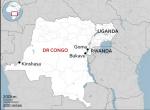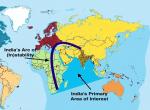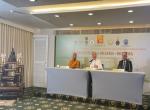Why are Critical Minerals Important?
Critical minerals, with their unique and irreplaceable properties, are vital to modern technologies, industries, and national security. Their designation as critical stems from these properties but also from the potential risks that any disruptions in their supply chain could pose, including geopolitical tensions, natural disasters, or market fluctuations. Access to critical minerals is a game-changer for advancing environmental sustainability goals. A prime example is the role of rare earth elements (REEs) in manufacturing components for clean energy technologies like wind turbines and electric vehicles.
These minerals are not just crucial for our present, but they hold the key to a brighter future. They are the driving force behind the transition towards a low-carbon economy and reducing dependence on fossil fuels, offering a hopeful sign for a more sustainable future. The reliance on other countries for critical minerals is a major national security issue. Having a dependable and secure source of critical minerals is crucial for sustaining military strength, defence capabilities, and the resilience of infrastructure, and can minimize and eliminate its susceptibility to international tensions and trade conflicts by promoting domestic production and diversifying supply chains. Critical minerals are vital and the driving force for economic growth and enhancing competitiveness, fueling innovation, fostering industrial expansion, and generating employment opportunities. Industries that depend on critical minerals are pivotal and the backbone of driving economic activities across a wide range of sectors, including manufacturing, technology, energy, and transportation.
Diversifying sources of critical minerals and building robust supply chains are crucial to minimizing the impact of supply disruptions. Supply chain resilience can be enhanced by developing new extraction methods, advancing recycling technologies, and making strategic investments in exploration and mining projects, directly impacting our ability to maintain our technological edge and economic competitiveness.
Critical Minerals and Central Asia
Central Asia, a veritable treasure trove of critical minerals, holds a significant portion of the world’s necessary minerals. With 38.6% of the world's manganese ore, 30.07% of chromium, 20% of lead, 12.6% of zinc, 8.7% of titanium, and other valuable resources, it is a strategic powerhouse.[1] In September, Kazakhstan President Kassym-Jomart Tokayev described critical minerals as the “new oil.” The region's vast reserves of minerals have attracted the attention of major global powers, leading to complex geopolitical dynamics and competition. The presence of these minerals in Central Asia underscores their global importance and emphasizes the need for strategic action.
One of the most critical minerals in Central Asia is rare earth elements (REEs). A 2018 USGS report showed 384 “occurrences” of REEs and rare metals across the five countries.[2] The region is rich in rare metals such as monazite, zircon, apatite, xenotime, pyrochlore, allanite, and columbite, concentrated in specific areas such as the Kazakh steppe, Tien Shan, and Pamir mountains. Central Asia's abundant REE reserves, particularly in countries like Kazakhstan and Kyrgyzstan, have made the region a focal point in the global supply chain. Also, as the demand for critical minerals continues to rise, major global powers are increasingly competing for access to these resources.
Post Soviet disintegration, China has gradually become one of Central Asia's major trade partners and investors. In recent years, China has diversified its interests in Central Asia from energy imports and transportation to critical minerals. China has actively sought control over critical mineral deposits in Central Asia to support its industrial and technological ambitions. China's Belt and Road Initiative (BRI), a global infrastructure development strategy, has further intensified its engagement in the region. Under the BRI, China aims to secure access to critical minerals and establish infrastructure for extraction and transportation, thereby enhancing its control over the global supply chain.
Major Power Competition Around Critical Minerals in Central Asia
Beijing’s involvement in Central Asia's critical mineral sector has raised concerns among other global powers, especially the United States and the West. These countries are vying for regional influence to safeguard their economic and strategic interests. The United States, for example, has been seeking to diversify its critical mineral supply chain and reduce its dependency on Chinese sources. As a result, a growing focus has been on strengthening partnerships with Central Asian countries to secure access to critical minerals and counterbalance China's influence.
During the historic first US-Central Asia summit in September 2023, the United States proposed launching a C5+1 Critical Minerals Dialogue (CMD). This initiative aims to foster the continued development of Central Asia's abundant mineral wealth and bolster the security of critical minerals. The proposed dialogue, which involves the five Central Asian countries and the United States, seeks to create a platform where the countries involved can openly discuss the challenges and opportunities related to critical minerals. It also aims to facilitate closer collaboration between government officials and private sector industry to attract investment and build robust critical minerals supply chains through unified efforts. The potential impact of this initiative is significant, as it could help to reduce the region's dependence on a single country for critical minerals and promote a more balanced and sustainable global supply chain.[3]
On February 8, the U.S. Department of State convened the inaugural meeting of the C5+1 Critical Minerals Dialogue (CMD), bringing together senior officials from all five Central Asian countries. During the meeting, the United States emphasised the financial opportunities available through the Minerals Security Partnership (MSP) and the Partnership for Global Infrastructure and Investment (PGII).[4] The primary aim is to decrease the United States' reliance on China, which includes addressing China's monopoly over the supply chain and countering Chinese influence in the Central Asian mineral sector. However, achieving these objectives will require targeted engagement and increased investment by the United States.
Central Asian nations are currently in the process of shifting towards cleaner and more sustainable energy alternatives, with the goal of decreasing their reliance on traditional energy sources. This global competition over critical minerals will provide these countries with increased investments and essential expertise to facilitate the development of their sustainable energy sector, ultimately resulting in significant benefits for their economies and the environment.
Moreover, the responsible extraction and development of these resources could be a game-changer, contributing to economic growth, industrial development, and energy security in Central Asia and beyond. The potential benefits are immense, offering a promising future. However, the challenges are equally significant. It's not just essential; it's a call to action to manage resource extraction sustainably, minimize environmental impacts, ensure equitable distribution of benefits to local communities, and ensure a sustainable and equitable future. The urgency of this call cannot be overstated, as the responsible management of these resources is not just about economic growth, but about the long-term stability and prosperity of the region.
In Central Asia, the competition for critical minerals has implications for regional stability and governance. The extraction and trade of these resources can either fuel economic development and stability, or contribute to political tensions and conflicts. Central Asian countries are challenged with managing their mineral wealth in a way that promotes sustainable development and mitigates potential social and environmental risks associated with resource extraction.
Conclusion
The geopolitics of critical minerals in Central Asia presents a complex and ever-changing situation with significant implications. Pursuing these resources reflects the interconnectedness of global economic and strategic interests. With the increasing demand for critical minerals, Central Asia's geopolitical landscape is expected to transform, which will shape the region's future and have a lasting impact on the global stage. The abundance of these resources in the region is expected to heighten competition for access, once again turning it into a focal point of contention. However, compared to previous occurrences, Central Asian countries now demonstrate increased assurance in navigating geopolitical shifts and handling major power rivalries. Hence, all pertinent stakeholders must partake in constructive dialogue and collaboration while prioritizing the interests of the Central Asian nations. It will also ensure that the critical minerals in Central Asia help sustainable development, regional stability, and global innovation.
References
[1] Eldaniz Huseynov and Abakhon Sultonazarov, ‘Central Asia's critical resources: a new space for great power competition?’, CABAR.asia, March, 29, 2024. https://cabar.asia/ru/critical-raw-materials-central-asia
[2] Charley Ward, ‘The C5+1 Critical Mineral Dialogue: What It Means and How We Got Here’, The Diplomat, March 25, 2024. https://thediplomat.com/2024/03/the-c51-critical-mineral-dialogue-what-it-means-and-how-we-got-here/
[3] C5+1 Leaders’ Joint Statement, White House, Press briefing, September 21, 2023.
https://www.whitehouse.gov/briefing-room/statements-releases/2023/09/21/c51-leaders-joint-statement/
[4] https://thediplomat.com/2024/03/the-c51-critical-mineral-dialogue-what-it-means-and-how-we-got-here/
(The paper is the author’s individual scholastic articulation. The author certifies that the article/paper is original in content, unpublished and it has not been submitted for publication/web upload elsewhere, and that the facts and figures quoted are duly referenced, as needed, and are believed to be correct). (The paper does not necessarily represent the organisational stance... More >>
Image Source: https://daviscenter.fas.harvard.edu/sites/default/files/styles/interior_hero_image_small/public/2023-09/crirical%20minerals_event%20page.jpg?itok=POJoR3oQ











Post new comment